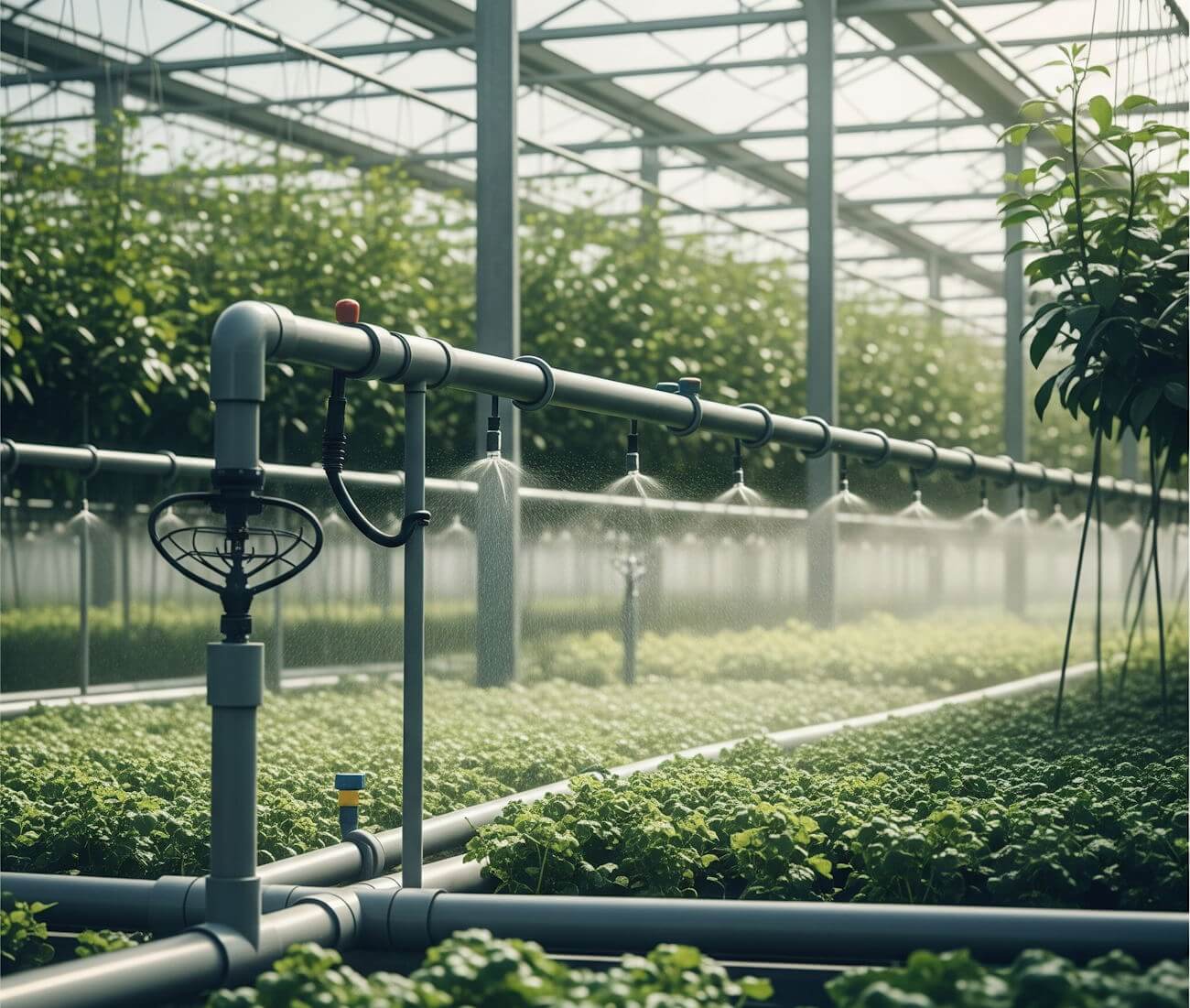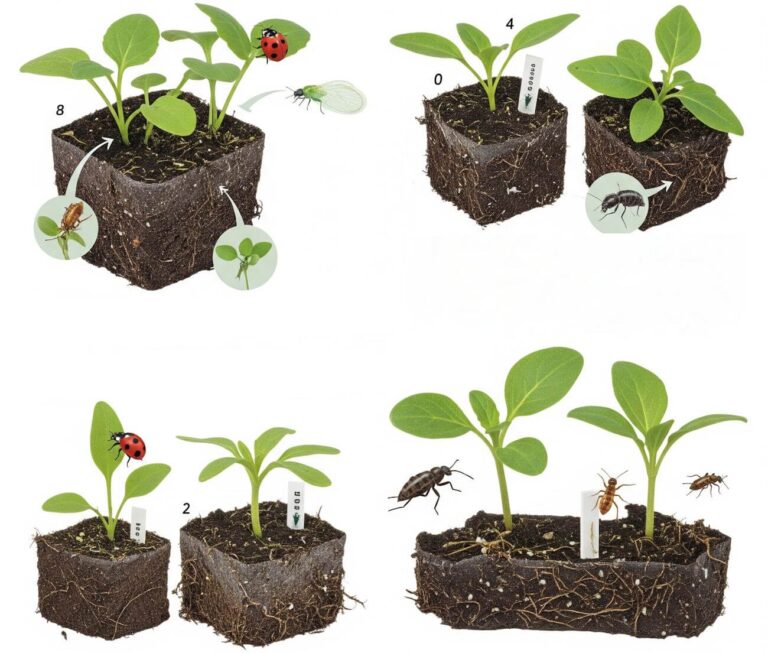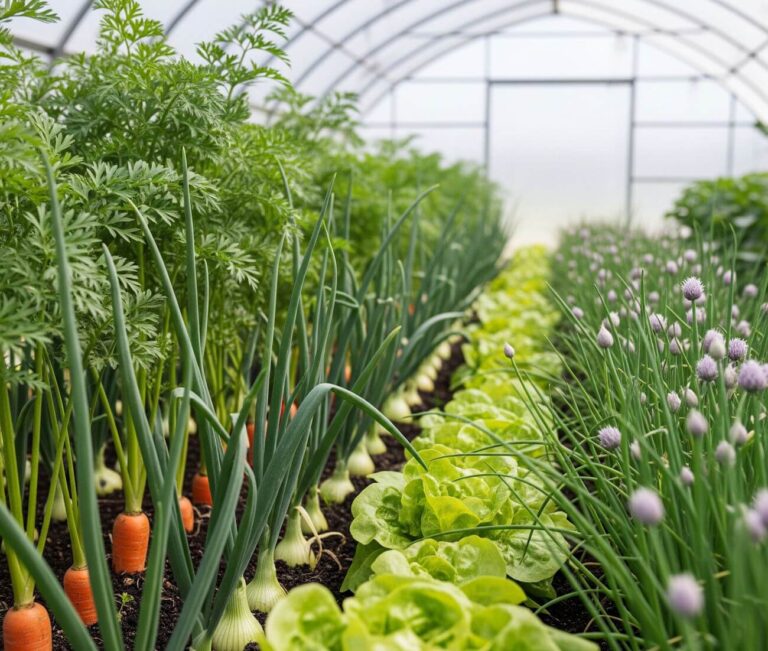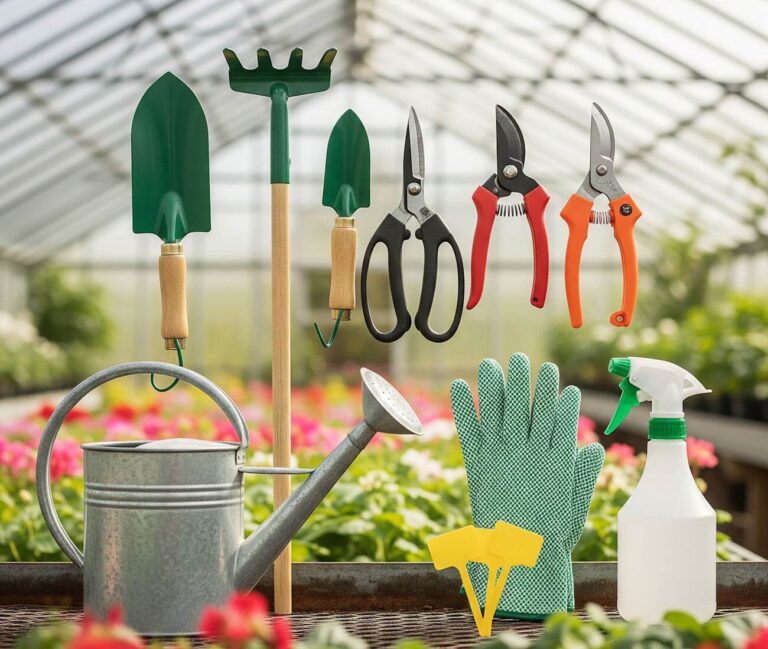Introduction to Greenhouse Irrigation
Greenhouse irrigation systems play a crucial role in maintaining the ideal environment necessary for plant growth. By delivering water directly to the plants’ roots, these systems ensure that crops receive the moisture they need to thrive, particularly in controlled conditions where natural rainfall is absent. Understanding the various options and their functionalities is essential for any greenhouse owner aiming to maximize their yield and crop health.
Effective irrigation within a greenhouse not only sustains plant life but also enhances growth rates and overall productivity. In an enclosed space, plants may compete for limited resources, including water, which makes a well-designed irrigation system imperative. The application of water must be carefully managed, as both overwatering and underwatering can lead to detrimental effects, such as root rot or drought stress. Therefore, choosing the right irrigation method is vital in fostering a healthy growing environment.
There are several types of greenhouse irrigation systems, each with its own set of advantages and functionalities. For example, drip irrigation systems offer precision in water delivery, minimizing waste while maximizing efficiency. Alternatively, sprinkler systems can cover larger areas but may lead to water runoff if not properly calibrated. Efficient irrigation designs will consider factors such as plant type, growth stage, and environmental conditions, thereby tailoring the water supply directly to the plants’ needs.
In conclusion, understanding greenhouse irrigation systems is key for achieving optimal growth conditions. The importance of properly managed irrigation cannot be overstated; it is a fundamental aspect that directly impacts plant health and yield. Selecting the right system allows growers to harness their environment effectively, ultimately resulting in a flourishing greenhouse ecosystem.
Types of Greenhouse Irrigation Systems
When managing a greenhouse, selecting the appropriate irrigation system is crucial for optimal plant growth and resource management. There are several types of irrigation systems available, each with unique characteristics, benefits, and potential drawbacks. This section examines three common greenhouse irrigation systems: drip irrigation, overhead irrigation, and ebb and flow systems.
Drip irrigation is a highly efficient method where water is delivered directly to the plant’s root zone through a network of tubes and emitters. This targeted approach minimizes water wastage and reduces disease risks by keeping foliage dry. The primary benefits of drip irrigation include lower water usage, improved nutrient delivery, and labor efficiency. However, it may require a higher initial setup cost and regular maintenance to prevent clogging in the emitters.
Overhead irrigation, often referred to as sprinkler irrigation, distributes water from above using overhead pipes and sprinkler heads. This method mimics natural rainfall, ensuring uniform coverage throughout the greenhouse. Benefits of overhead irrigation include ease of installation and the ability to water large areas simultaneously. On the downside, this system can lead to water runoff, increased foliage moisture, and potential fungal diseases due to consistent wetting of the leaves.
Ebb and flow, or flood-and-drain irrigation systems, involve flooding the planting area with water, then allowing it to drain away. This cycle promotes aeration and encourages healthy root development. The advantages of ebb and flow systems are their efficiency, reduced labor costs, and effective use of nutrients. However, these systems tend to have higher upfront costs and may require careful design considerations to ensure proper drainage and prevent waterlogging.
Understanding the various types of greenhouse irrigation systems allows growers to make informed decisions based on their specific needs, financial considerations, and the types of plants they cultivate. Each system brings its own advantages and challenges, impacting overall greenhouse management and productivity.
Factors to Consider When Choosing an Irrigation System
When selecting an appropriate irrigation system for a greenhouse, several critical factors must be taken into account to ensure optimal performance and efficiency. The foremost consideration is the size of the greenhouse. Larger structures may require more extensive systems, such as drip or overhead irrigation, to ensure adequate water distribution. The design and configuration of the greenhouse can also affect which system is most suitable, necessitating a tailored approach depending on various layouts and growth areas.
The types of plants being cultivated in the greenhouse are another crucial factor. Different plants have varying water requirements; for example, succulents generally need less water compared to leafy greens. Understanding the specific needs of each plant type will guide the selection of an irrigation method that meets these demands without wastage or under-application. Additionally, plant growth stages should be considered, as young plants may require more frequent watering than mature ones.
Water source availability cannot be overlooked when choosing an irrigation system for your greenhouse. Depending on whether you are utilizing municipal supply, wells, or rainwater harvesting, the characteristics of the water source—including its consistency, quality, and pressure—will influence which system is feasible. Climate conditions also play an integral role; regions with high evaporation rates may benefit from drip irrigation, as it minimizes water loss compared to surface watering methods. Lastly, budget constraints are essential, as the initial investment, maintenance costs, and potential for automation of the system will affect overall financial feasibility. Evaluating these factors carefully enables greenhouse owners to select an irrigation system that is both practical and beneficial for their specific circumstances, ultimately enhancing plant growth and sustainability.
Advantages of Drip Irrigation Systems
Drip irrigation systems have gained prominence as a precise and efficient method of watering crops. These systems operate by delivering water directly to the roots of plants through a network of tubing and emitters. By supplying water in small, manageable amounts, drip irrigation minimizes evaporation and runoff, ensuring that plants receive adequate moisture with minimal wastage. This targeted approach maximizes water use efficiency, making it particularly advantageous in regions where water resources are limited or expensive.
One of the primary benefits of drip irrigation systems is their ability to reduce water consumption by up to 50% compared to traditional irrigation methods. This efficiency not only conserves water but also translates into significant cost savings for growers over time. Additionally, drip irrigation can be tailored to meet the specific water requirements of different plant types, accommodating varying root zones and growth rates. This adaptability allows for optimal crop health and yield, particularly in diverse agricultural setups.
Long-term advantages of implementing drip irrigation systems extend beyond immediate water and cost savings. The precise application of water encourages deep root growth, enhances drought resilience, and promotes healthier crops. Furthermore, reduced water application lessens the risk of soil erosion and nutrient leaching, contributing to improved soil health and fertility. Over time, farmers may also benefit from decreased labor costs due to less time spent on watering tasks, allowing them to allocate resources more efficiently.
In conclusion, drip irrigation systems present a viable option for enhancing water efficiency and promoting sustainable agricultural practices. By minimizing water waste and providing targeted nutrient delivery, these systems not only support plant health but also contribute to long-term economic and environmental benefits for growers.
Benefits of Overhead Irrigation Systems
Overhead irrigation systems are widely adopted in agricultural practices for their efficiency and versatility. One of the main functionalities of these systems is their ability to distribute water evenly across a broad area, which is crucial for crop health. They operate by delivering water from above, mimicking natural rainfall, and can effectively cover large fields, making them a preferred choice for extensive farming operations.
The deployment methods for overhead irrigation systems vary, with options including center pivot systems, traveling gun sprinklers, and fixed overhead systems. Center pivot systems, for instance, utilize a rotating arm that moves in a circular pattern, ensuring consistent coverage while minimizing labor costs. Similarly, traveling gun sprinklers can be moved from one field to another, providing flexible irrigation solutions where fixed systems may not be viable. These diverse methods cater to different agricultural needs, enabling farmers to choose a system that aligns with their specific crop types and field conditions.
One of the unique advantages of overhead irrigation systems is their ease of installation and maintenance. Compared to other irrigation methods, such as drip irrigation, overhead systems often require less initial setup and can be quickly adjusted or repaired as necessary. This simplicity is particularly beneficial for farmers who need reliable solutions without extensive downtime. Furthermore, these systems can be automated with timers and sensors, enhancing water management and promoting sustainable practices. Notably, they are especially advantageous in scenarios where crops are prone to disease, as overhead watering can minimize soil saturation and promote healthier plant growth.
Overall, the benefits of overhead irrigation systems make them a formidable option for various agricultural applications. The combination of efficiency and adaptability positions these systems as a staple in modern farming practices.
Ebb and Flow Systems: A Closer Look
The ebb and flow irrigation system, also known as flood and drain, is a popular choice among greenhouse growers due to its adaptability and effectiveness in managing plant hydration. This system operates by temporarily flooding the growing area with nutrient-rich water and then allowing it to drain away, which creates alternating periods of moisture and dryness. This cycle mimics natural conditions and supports healthy root development, making it particularly suitable for a variety of plant types and growth stages.
A significant advantage of ebb and flow systems is their efficiency in water and nutrient usage. By flooding the grow bed, plants receive an ample supply of nutrients dissolved in the water. As the water drains away, it not only delivers nutrients to the plants but also oxygenates the roots, which is vital for their overall health and growth. Moreover, the ability to control the duration and frequency of flooding allows for precise management of moisture levels, tailored to the specific needs of the plants. This is particularly beneficial during different growth phases—seedlings may require more frequent watering, while mature plants may thrive on a more extended cycle.
However, precise monitoring is crucial when utilizing ebb and flow irrigation systems. The setup requires attention to detail regarding the timing and depth of the flood cycle. If the water remains for too long or drains too quickly, it can lead to insufficient moisture or waterlogged conditions, both of which can stifle plant growth. Growers must also ensure that the system is free from clogs and that the water used is of high quality. Although initial setup may require investment and some technical knowledge, the benefits of a well-managed ebb and flow system can significantly enhance plant growth and yield in a greenhouse environment.
Water Quality and Management Considerations
Water quality is a paramount consideration in the effective implementation of greenhouse irrigation systems, as it directly influences plant health and growth. Several factors should be monitored to ensure that the water used meets the specific needs of the plants being grown. Three critical aspects of water quality are pH, salinity, and nutrient content.
The pH level of water can significantly affect nutrient availability to plants. Most plants thrive in a slightly acidic to neutral pH range of 6.0 to 7.0. Water that falls outside this range can lead to nutrient deficiencies or toxicities, adversely impacting plant development. Regular testing of water sources is essential to maintain optimal pH levels, necessitating potential adjustments through the addition of acids or bases as needed.
Salinity is another vital factor, as excessive salt levels can lead to osmotic stress in plants and hinder their ability to absorb water. It is crucial for greenhouse operators to monitor the salinity of their irrigation water, especially in regions where saline water is prevalent or where fertilizers are heavily applied. Utilizing rainwater collection systems or installing salt-removal treatment processes can be effective solutions for managing salinity.
Furthermore, understanding the nutrient content of irrigation water allows growers to develop a tailored fertilization strategy that promotes robust plant growth. Water can contain varying levels of macronutrients, such as nitrogen, phosphorus, and potassium, which are essential for plant health. Balancing these nutrients according to specific crop needs ensures optimal growth conditions and enhances the efficiency of nutrient uptake.
Effective water management strategies, such as recirculation systems and regular monitoring of water quality, contribute to mitigating potential issues, including the spread of diseases. By maintaining high standards of water quality, greenhouse operators can foster a healthy environment for plant development, ultimately leading to increased yields and better crop quality.
Cost Analysis of Different Irrigation Systems
When selecting a greenhouse irrigation system, a comprehensive cost analysis is crucial to understanding the long-term financial implications associated with each option. The primary costs to consider include the initial setup costs, ongoing maintenance expenses, and potential savings achieved through water usage efficiency.
The initial setup costs for various irrigation systems can vary significantly. For instance, a drip irrigation system, known for its water efficiency, may require a higher upfront investment due to its extensive infrastructure of tubes and emitters. However, its ability to deliver water directly to the root zone minimizes water loss and can lead to substantial savings over time. In contrast, simpler systems such as soaker hoses or sprinkler setups may offer lower installation costs but are often less water-efficient. Buyers should consider the trade-offs between initial expenditures and potential long-term water savings when making their choice.
Ongoing maintenance expenses also play a key role in the overall cost of greenhouse irrigation systems. Drip systems often require periodic checks for clogs and filter maintenance, which can incur additional costs. Conversely, simpler systems may have lower maintenance requirements but could necessitate more frequent replacements. Over time, the cumulative costs of these maintenance tasks can impact the total financial viability of the selected irrigation method.
In terms of water usage efficiency, employing an irrigation system designed for optimal performance can yield significant savings on water bills. Techniques such as rainwater harvesting or the use of automated timers can enhance water conservation strategies, leading to reduced operational costs. A thorough analysis of how various systems align with water-saving practices will inform greenhouse operators about the most cost-effective and efficient choice for their specific needs.
Conclusion: Choosing the Right System for Your Greenhouse
When it comes to greenhouse irrigation systems, the selection process can significantly influence the productivity and sustainability of your plants. The variety of irrigation types available, including drip, overhead, and automated systems, offers different advantages that cater to specific greenhouse needs. It is essential to consider your greenhouse characteristics, such as plant types, size, and climate conditions, before making a choice.
Evaluating factors such as water availability, cost-effectiveness, and ease of maintenance should also play a crucial role in your decision-making process. For instance, drip irrigation systems are often celebrated for their water efficiency and precise application, making them ideal for smaller or specialized greenhouses that require targeted watering solutions. On the other hand, overhead irrigation systems may be more suitable for larger greenhouses housing a variety of plants that benefit from comprehensive moisture and humidity distribution.
Moreover, an automated irrigation system might be the preferred option for those who wish to enhance operational efficiency and minimize manual labor. Such systems can deliver consistent water levels and adapt to varying climatic conditions, thereby optimizing plant growth and yield. Throughout the blog, we have discussed the importance of assessing individual greenhouse requirements and aligning them with the most suitable irrigation system available.
In conclusion, selecting the right irrigation system is paramount for maximizing greenhouse productivity and ensuring sustainable practices. By weighing the different options carefully and considering specific traits of your greenhouse environment, you can make an informed decision that will foster healthy plant growth while effectively managing water resources.







